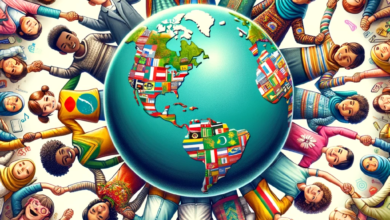Discover the heartwarming traditions and celebrations of Unity Day in Burundi. Explore how this remarkable event brings people closer, fostering unity and understanding.
Related:
Quick Facts:
- Date: February 5th
- Main Components: Celebrating the Charter of National Unity and the efforts of reconciliation and development
- Popularity: A public holiday in Burundi
- Pairings: Cultural events, speeches, prayers, and sports
- Variations: None
Introduction
Burundi is a small landlocked country in Central Africa, bordered by Rwanda, Tanzania, and the Democratic Republic of Congo. It has a population of about 12 million people, belonging to three main ethnic groups: the Hutu (85%), the Tutsi (14%), and the Twa (1%). The history and unity of Burundi are intertwined with the effects of colonization, ethnic clashes, and civil wars, as well as the efforts of reconciliation and development. In this article, we will explore how Burundi has struggled to overcome its past traumas and achieve peace and harmony among its diverse people.
Colonization and Independence
Before the arrival of the Europeans, Burundi was a kingdom ruled by a Tutsi monarch, who had a privileged status over the Hutu majority and the Twa minority. The kingdom had relations with other neighboring kingdoms, such as Rwanda and Buganda, sometimes involving trade, alliances, or wars. The first European to visit Burundi was the German explorer Gustav Adolf von Götzen in 1896. He was followed by other German missionaries and traders, who established their presence in the region. In 1899, Burundi became part of German East Africa, which marks the start of the European colonial era.
After World War I, Germany lost its colonies to the victorious allies. Burundi was then transferred to Belgium, which administered it as part of the League of Nations mandate territory of Ruanda-Urundi. The Belgians continued the policy of favoring the Tutsi minority over the Hutu majority, by granting them more education, political representation, and economic opportunities. This created resentment and frustration among the Hutus, who felt discriminated and oppressed by both the Tutsis and the Belgians.
In the 1950s and 1960s, nationalist movements emerged in both Rwanda and Burundi, demanding independence from Belgium. The Hutus were more vocal and radical in their demands, while the Tutsis were more cautious and moderate. The Belgians tried to appease the Hutus by introducing reforms that increased their participation in local administration and elections. However, this also provoked violent reactions from some Tutsis, who feared losing their privileged position. In 1959, a Hutu uprising in Rwanda led to the massacre of thousands of Tutsis and the exile of many others to neighboring countries, including Burundi.
In 1961, a referendum was held in Ruanda-Urundi on whether to become independent as one country or two separate countries. The majority voted for separation, and thus Rwanda and Burundi became independent in 1962. Burundi retained its constitutional monarchy under King Mwambutsa IV, a Tutsi who tried to balance the interests of both ethnic groups. However, his efforts were undermined by political instability, social unrest, and external interference.
Related: Liberation Day In San Marino 2023
Ethnic Conflicts and Civil Wars
The first major crisis in independent Burundi occurred in 1965, when a group of Hutu officers attempted a coup d’état against King Mwambutsa IV. The coup failed, but it triggered a brutal repression by the Tutsi-dominated army, which killed thousands of Hutus and eliminated their representation in the government. This marked the beginning of a cycle of violence and instability that would plague Burundi for decades.
In 1966, King Mwambutsa IV was deposed by his son Prince Ntare V, who was then overthrown by his prime minister Michel Micombero, a Tutsi who proclaimed himself president and abolished the monarchy. Micombero established a one-party dictatorship that excluded any opposition or dissent. In 1972, another Hutu rebellion broke out in several regions of Burundi, aiming to overthrow Micombero’s regime. The rebellion was crushed by the army with extreme brutality, resulting in a genocide that killed an estimated 150000 to 300000 Hutus. Many survivors fled to neighboring countries as refugees.
In 1976, Micombero was ousted by another Tutsi officer named Jean-Baptiste Bagaza, who tried to modernize Burundi’s economy and society. He also introduced some reforms that granted more rights to the Hutus and other minorities. However, he also faced resistance from some conservative Tutsis who accused him of betraying their interests. In 1987, Bagaza was overthrown by another Tutsi officer named Pierre Buyoya, who promised to end ethnic discrimination and restore democracy.
Buyoya initiated a process of national dialogue and reconciliation, which led to the adoption of the Charter of National Unity in 1991. The charter recognized the equality and dignity of all Burundians, regardless of their ethnic, regional, or religious affiliation. It also paved the way for the drafting of a new constitution that established a multi-party system and a power-sharing arrangement between the Hutus and the Tutsis. In 1992, Burundi held its first democratic elections, which were won by Melchior Ndadaye, a Hutu leader of the Front for Democracy in Burundi (FRODEBU) party.
However, Ndadaye’s presidency was short-lived, as he was assassinated by some Tutsi soldiers in October 1993, only three months after taking office. His death sparked a civil war that lasted until 2005, involving various rebel groups, militias, and factions. The war claimed the lives of about 300000 people and displaced more than a million others. It also coincided with the genocide in Rwanda in 1994, which killed about 800000 Tutsis and moderate Hutus by the extremist Hutu Interahamwe militia. The two countries shared a common history and ethnicity, and their conflicts influenced each other.
The civil war in Burundi was finally ended by the Arusha Peace and Reconciliation Agreement, which was signed in 2000 by most of the warring parties. The agreement was mediated by regional and international actors, such as Tanzania, South Africa, and the United Nations. It provided a framework for political transition, security reform, human rights protection, and economic recovery. It also reaffirmed the principles of the Charter of National Unity and the power-sharing system between the Hutus and the Tutsis.
Reconciliation and Development
The implementation of the Arusha Agreement was not easy or smooth, as it faced many challenges and obstacles. Some rebel groups refused to sign or respect the agreement, and continued to fight until 2005. Some political leaders were reluctant or unable to compromise or cooperate with their rivals. Some segments of the society were still traumatized or distrustful of each other. Some external factors also affected the stability and security of Burundi, such as the conflicts in neighboring Congo and Somalia.
Despite these difficulties, Burundi managed to make some progress in its reconciliation and development process. In 2005, a new constitution was adopted by a referendum, which confirmed the power-sharing system and introduced a quota system that ensured a minimum representation of 30% for women and 3% for Twa in all elected institutions. A new government was formed, led by Pierre Nkurunziza, a former Hutu rebel leader who became president after winning the indirect elections by the parliament. Nkurunziza was re-elected in 2010 and 2015, but his third term was controversial and disputed by the opposition, who claimed that it violated the constitution and the Arusha Agreement. His attempt to run for a fourth term in 2020 sparked protests and violence that resulted in his death in June 2020. He was succeeded by Evariste Ndayishimiye, another former Hutu rebel leader who won the presidential election with 68% of the votes.
Related: Rosa Parks Day In Missouri 2023
Burundi has also achieved some achievements and aspirations in other fields, such as education, health, culture, and sports. For example, it has increased its literacy rate from 59% in 2002 to 86% in 2018. It has reduced its maternal mortality rate from 1100 per 100000 live births in 2000 to 473 in 2017. It has preserved its rich cultural heritage, such as its traditional drumming and dancing, which are recognized by UNESCO as intangible cultural assets. It has also produced some famous athletes, such as Venuste Niyongabo, who won the gold medal in the men’s 5000 meters at the 1996 Summer Olympics in Atlanta.
Conclusion
The history and unity of Burundi are intertwined with the effects of colonization, ethnic clashes, and civil wars, as well as the efforts of reconciliation and development. Burundi has suffered a lot from its past traumas and conflicts, but it has also shown resilience and determination to overcome them. Unity Day is a reminder of its journey to peaceful modernity and its hope for a better future. It is also an opportunity to celebrate its diversity and harmony among its people.



